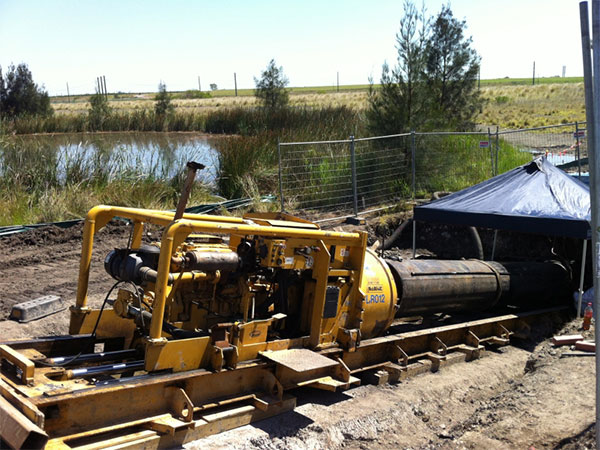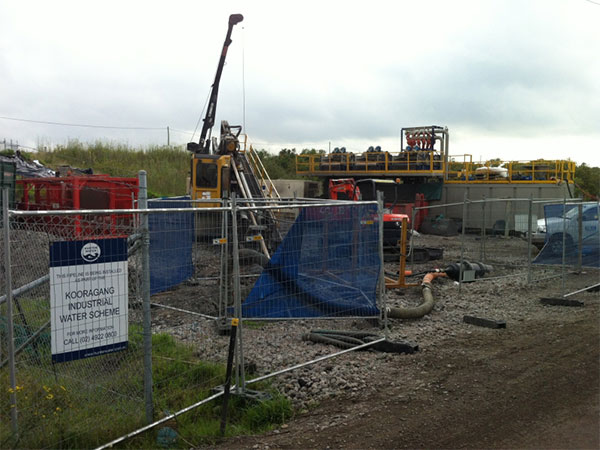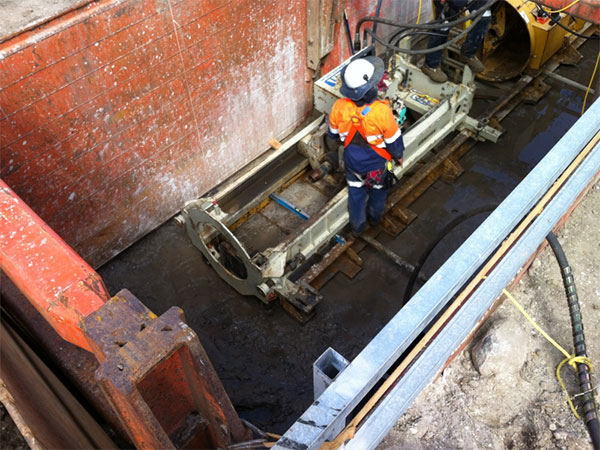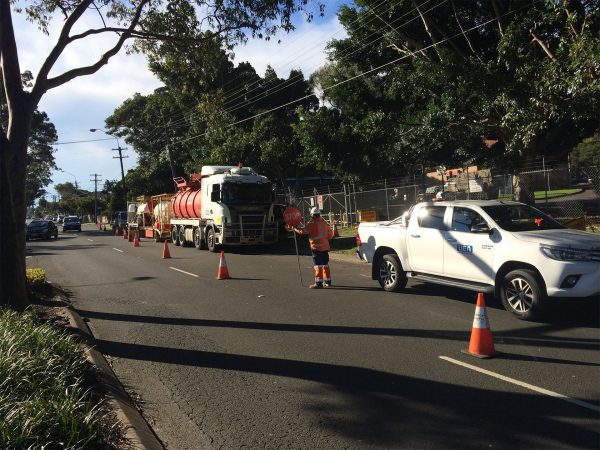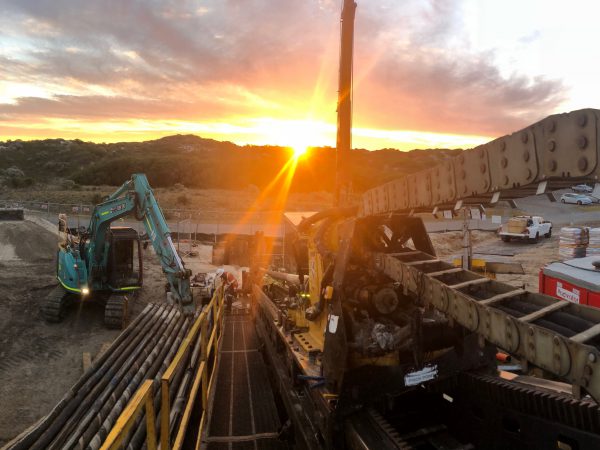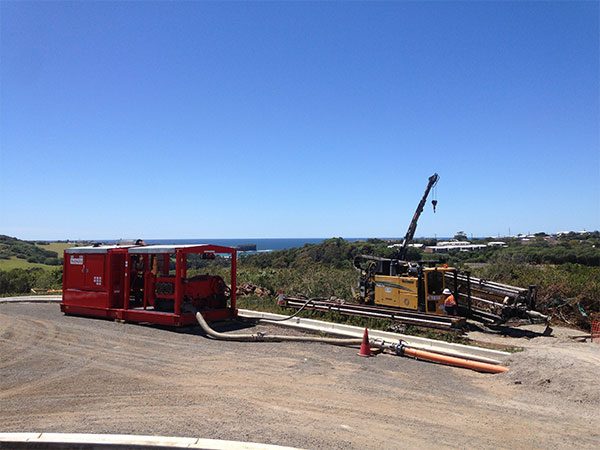Background
Hunter Water awarded the contract to undertake the design and construction of 2.92 kilometres of DN400 PN16 fully-welded PE pipe from the new treatment plant at the Steel River Estate at Mayfield West, to midway along Cormorant Road, Kooragang Island. UEA had to account for the multiple stakeholders impacted by the construction process and by the pipeline’s future operation. Affected parties included (but were not limited to) Hunter Water Treatment Alliance, Newcastle Coal Infrastructure Group, the Steel River Community Association and Newcastle Ports Corporation.
Scope of Works
- Three HDD shots of 470 metres, 610 metres and 460 metres, including one under the Hunter River
- One guided bore installation, including a 600mm steel casing installation
- A 56 metre steel casing installation for the Hunter River crossing
- Slip lining of approximately 600 metres of existing 500mm cast iron mains
- Conventional open cut works including fittings, final connections, flushing and testing
Technical Details
Bores 1 & 2
The three HDD shots each had their own difficulties as ground conditions differed for each. Bore #1 was 610 metres in length, approximately eight metres deep, positioned beneath a sensitive mangrove area, and the ground was water-charged due to the close proximity to the Hunter River. A suitable mud plan therefore had to be developed to ensure the bore opening was maintained at all times. The pilot bore was tracked using a ParaTrack 2 system that allowed constant/real-time location of the drilling head. The pilot bore was completed in three days, the hole reamed to size with a tail string in place and pipe installed with no problems.
Bore 3 - Riverbed Bore
Bore #3 was a 460 metre shot under the Hunter River. The material encountered was soft rock and completely different to the first two bores situated less than 1,000 metres away. On the southern side of the river there was a 28 metre elevation difference from the natural surface to the design bore depth. Difficult ground conditions at the start of the bore required a 56 metre steel casing to be installed using a conventional auger boring machine. The casing was keyed into the rock – at a 22 percent angle – to ensure the product pipe was protected and returns could be maintained for the duration of the HDD installation. The D300 HDD rig was then mobilised to the other side of the bore so that back reaming could commence. The hole was reamed straight to size and pipe installed without any issues.
A steel case was required by the RMS for the road crossing under Tourle Street due to the high traffic volumes and future road or bridge widening. The casing was installed using a Guided Boring Machine (GBM) followed by the thrust borer. The area was heavily water charged and therefore required dewatering spears to be installed.
The slip lined section was 600m of 400mm PE, installed inside an existing 500mm CICL pipeline.
CHALLENGES
Managing the environmental issues was a high priority for all stakeholders. One area of the project was within a potential Green and Golden Bell Frog Habitat which required an independent environmental study over multiple nights to identify any frogs and move them if located. A frog fence was installed to separate the frog habitat from the construction zone. All water removed during the dewatering process had to be tested and handled in line with the environmental guidelines for the project.
Other challenges included the problem of groundwater, contaminated ground and buried obstructions, including metal slag sculls.
COMPLETION
The client’s EOI and tender process proved successful for this project – identifying early the companies with the capability to complete the highly technical project. With a final list of four invited to tender, all potential non-conformances were worked through so that the best for project offer could be obtained. For this reason, the project was delivered variation free and ahead of time.

